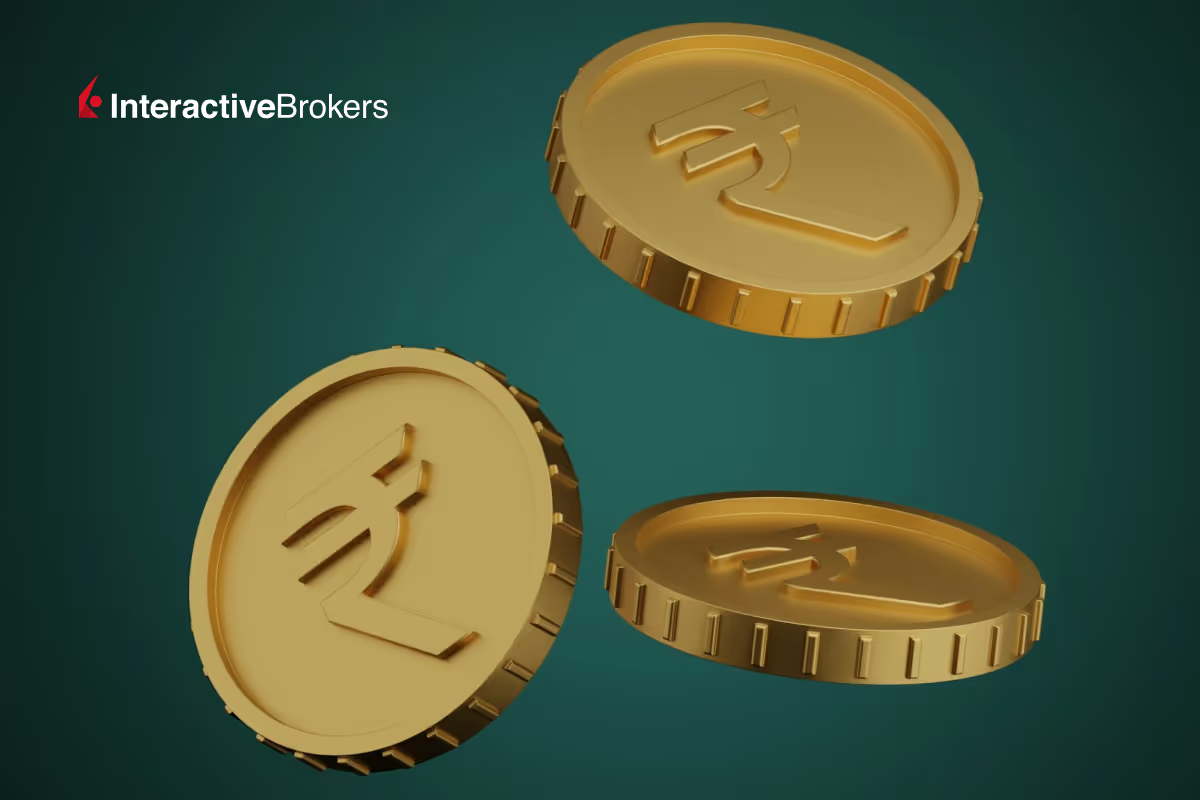

The S&P 500 is one of the most widely followed stock market indices in the world, representing 500 of the largest publicly listed companies in the United States.
This article will walk you through everything you need to know about investing in the S&P 500 from the UAE.
From understanding your investment options and choosing the right platform to managing costs and considering risks, you’ll learn how to make informed decisions that align with your financial goals.
Video summary
Watch a short recap of how to invest in the S&P 500 from Dubai and the UAE in the video below:
1. Pick an ETF tracking the S&P 500
An Exchange-Traded Fund (ETF) is an investment fund that holds a diversified portfolio of assets, which may include stocks, bonds, cash, and other financial products. An ETF tracking the S&P 500 invests in its 500 companies.
It is a practical solution by providing a single investment vehicle representing the entire index’s performance. By investing in S&P 500 ETFs, Emiratis and UAE residents can effectively participate in the potential growth of the index and benefit from the diversification advantages.
While there are no ETFs listed on the Dubai Financial Market (DFM) that directly track the S&P 500, investors can still gain exposure to the index by investing in international ETFs listed on other exchanges.
To assist you in finding suitable options, we have compiled a list of some of the largest ETFs that track the S&P 500:
Note: The ETFs in the table are ordered by Assets Under Management (AUM), which represents the total amount of investor money managed by the fund. We included only UCITs ETFs - no US ETFs, since these are generally not recommended for expat investors.
For non-US investors, a common tip is to avoid US-listed ETFs like VOO/SPY unless you fully understand the trade-offs:
- Withholding tax on dividends:
- US-listed (VOO/SPY): ~30% withheld on dividends.
- Irish-domiciled (London-listed) S&P 500 ETFs: ~15% withheld (via the US–Ireland treaty).
- US estate tax exposure:
- US-listed holdings above roughly USD 60k can drag your heirs into US estate-tax hassles if you pass away.
- Irish-domiciled ETFs shield you from that.
Each column in the table means the following:
- Ticker: It is the short code used to identify the ETF on a stock exchange.
- TER (annual fee): TER stands for Total Expense Ratio, which is the annual fee charged by the ETF provider. It’s expressed as a percentage of your investment. For example, a 0.03% TER means you pay $0.30 per year for every $1,000 invested. Lower TERs are more cost-efficient for long-term investors.
- Use of income: This describes what the ETF does with the dividends it receives from the underlying stocks.
- Distributing ETFs pay out dividends to investors.
- Accumulating ETFs automatically reinvest dividends back into the fund, increasing its value.
In addition to the columns presented, it is worth noting that all the ETFs listed in the table are physical ETFs. This means they directly buy and hold the underlying stocks in the S&P 500 index (This is different from synthetic ETFs, which use derivatives instead of holding the actual stocks).
Tax and cost implications
Investing in US-domiciled ETFs might have tax implications, so it’s often advisable to consider European-domiciled ETFs as well.
For non-US residents, VOO and similar US ETFs impose a 30% withholding tax on dividends and may also subject your assets to a 40% estate tax if your holdings exceed $60,000 at the time of death.
Fortunately, there are better alternatives that are specifically designed to mitigate these issues:
- Irish-Domiciled ETFs: These ETFs, such as Vanguard’s VUSD (the Irish-domiciled version of VOO), offer significant tax advantages. The dividend withholding tax is reduced to 15%, which is half of what you’d pay with VOO. Additionally, Irish-domiciled ETFs are not subject to US estate tax, making them a much safer option for non-US residents.
- Accumulating ETFs: If you prefer not to deal with the hassle of manually reinvesting dividends, you might want to consider an accumulating ETF like VUAA. Accumulating ETFs automatically reinvest dividends, which can be more tax-efficient and potentially lead to greater returns over the long term.
- Currency considerations: When choosing the currency for your ETF, it’s generally advisable to select the currency of the country where you plan to retire. For example, if you plan to retire in Europe, a Euro-denominated ETF might be a good choice. However, over the long term, currency exchange rates between developed countries tend to mean-revert, so the impact may not be as significant as you might think.
By opting for Irish-domiciled ETFs like VUSD or VUAA, you can save significantly on taxes and avoid the pitfalls associated with the US estate tax, all while maintaining exposure to the S&P 500.
2. Choose a good ETF broker
After selecting an ETF, the next step is to identify a reliable broker that allows you to invest in it:
Want to explore more options? Check the list of regulated brokers in the UAE and our individual reviews.
Interactive Brokers (IBKR) is the default community pick, for low commissions, excellent FX rates, and access to LSE for Irish ETFs. From the UAE, many fund in AED and convert inside IBKR (often the best FX).
Some local apps only offer US-listed ETFs (no Irish UCITS), which re-introduces the tax/estate issues.
CFD platforms (and “zero-fee” brokers that route orders for payment) are typically discouraged for long-term investing.
3. Place a “Buy Order”
Once you have chosen a suitable ETF broker and funded your account, you are ready to place a “Buy Order” for the S&P 500 ETF. For this example, we will use Interactive Brokers. However, you can follow these steps to execute your purchase with any broker:
a) Search for the desired S&P 500 ETF
Use the search function or browse through the available ETFs to find the specific S&P 500 ETF you have selected. Refer to the ticker symbol to locate the ETF accurately (in our case, we searched for VUSA):

You may encounter instances where the trading platform offers multiple versions of the same ETF, each denominated in a different currency, such as USD, EUR, or GBP. It is advisable to select the one that aligns with your account currency. For example, if your account currency is USD, choosing a USD-denominated ETF will help you avoid currency exchange fees.
b) Click on “Buy”
Usually, this tab is clear once you are on the ETF page, where you will find the chart and key information about the ETF.

c) Choose the order details
Now, you must choose the appropriate order type based on your preferences and trading strategy.
- Limit order: It is set by default on IBKR. So you can set a specific price at which you are willing to buy the ETF. The trade will only be executed if the market price reaches or falls below your specified limit price. Set the limit slightly above the current ask to get filled quickly without surprises.
- Market order: This order executes the trade at the prevailing market price and provides immediate execution.
- Amount or Units: Specify the amount of money or the number of shares you wish to invest in the S&P 500 ETF.

d) Place the order
Finally, click “Submit But Order” to submit your order. At this point, the broker will process the transaction and attempt to execute the trade at the specified parameters.
What to check before choosing an ETF
Not all ETFs are created equal. Here are the main things you should review before investing:
Fees (TER)
Each ETF provider charges a management fee, known as the total expense ratio (TER) or ongoing charges (OCF). This fee is automatically deducted from the fund. The ETFs presented have TERs as low as 0.03%. Lower fees mean you keep more of your returns over time.
Replication mehtod
ETFs track their index in different ways:
- Physical replication: The ETF actually buys the stocks in the index.
- Synthetic replication: The ETF uses financial contracts (derivatives) to copy the index’s performance.
We believe that investing in synthetic ETFs adds unnecessary risk without appropriate compensation. Again, all the ETFs presented in our list are physical.
Income (dividends)
ETFs handle dividends in two ways:
- Accumulating ETFs: Automatically reinvest dividends into the fund, increasing its value over time.
- Distributing ETFs: Pay dividends directly to you, so you can use or reinvest them yourself.
If you want to grow your investment long-term, accumulating ETFs is better. If you prefer regular payouts, distributing ETFs might be the right fit.
Tax tip for UAE investors: There’s no local tax on dividends or capital gains. But US-domiciled ETFs may withhold 30% tax on dividends. Irish-domiciled ETFs typically reduce this to 15% due to tax treaties.
Fund size
Larger ETFs are usually safer because they’re less likely to shut down. Small ETFs can be closed, forcing the fund to sell assets and return your money.
Hedging
Some ETFs use currency hedging to protect against exchange rate changes. While this reduces currency risk, it can also add extra costs.
Domicile
The ETF’s domicile (where it’s registered) affects taxes and regulations. Many UAE investors prefer Ireland-domiciled ETFs because of their lower US dividend withholding tax rate (15% instead of 30%).
Practical tips for long-term success
Building wealth with ETFs isn’t about timing the market – it’s about consistency, discipline, and making small, smart choices over time. Here are three proven strategies that can help:
Dollar-cost averaging
Instead of investing a lump sum all at once, dollar-cost averaging (DCA) means investing a fixed amount of money at regular intervals (e.g., monthly).
- This spreads your purchases over time, so you buy more shares when prices are low and fewer when prices are high.
- It reduces the stress of “perfect timing” and keeps you invested regardless of short-term market swings.
- For example, investing $500 every month into an S&P 500 ETF helps smooth out volatility and builds discipline.
Reinvesting dividends
Dividends can be a powerful tool for compounding returns:
- With accumulating ETFs, dividends are reinvested automatically, increasing the fund’s value.
- With distributing ETFs, you can manually reinvest dividends to buy more shares rather than spending them.
- Over the long run, reinvesting dividends means your money starts earning returns on top of returns – this is the core of compounding.
Staying disciplined during market downturns
Market drops can be unsettling, but they’re also a normal part of investing:
- Successful investors stick to their plan instead of selling in panic.
- Viewing downturns as a chance to buy at lower prices (instead of as a threat) can help you stay calm.
- Remember: historically, markets have always recovered and reached new highs over time.
Bottom line
In conclusion, investing in the S&P 500 from the UAE is an accessible and tax-efficient way to gain exposure to the US stock market. Here’s a recap of the key steps:
- Pick an ETF tracking the S&P 500: Choose low-cost Irish-domiciled ETFs like VUSD or VUAA to reduce tax implications and optimize long-term returns.
- Select a reliable broker: Consider platforms like Interactive Brokers, eToro, or Sarwa based on fees, account types, and ease of use.
- Open and fund your account: Complete the account setup process and deposit funds in your preferred currency to avoid unnecessary conversion costs.
- Place a buy order: Use your broker’s trading platform to purchase your chosen ETF and start building your portfolio.
We hope this guide has clarified the process and helped you feel confident about investing in the S&P 500 from the UAE. Remember to stay consistent, reinvest dividends, and focus on the long term to maximize your investment success.





